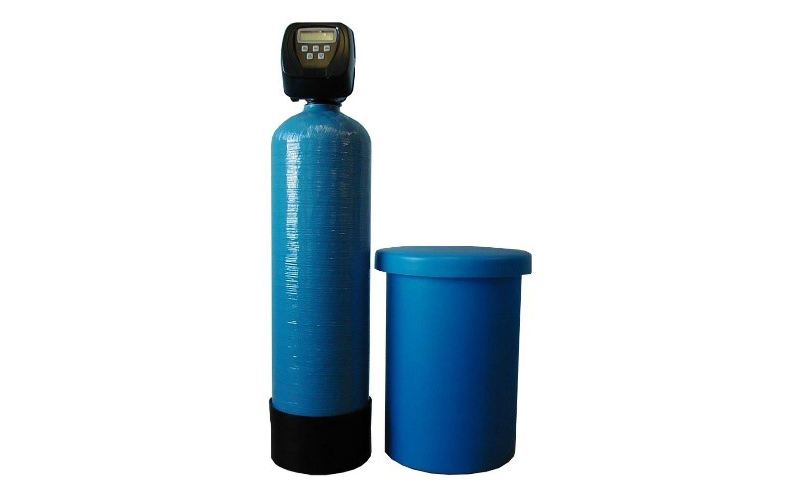
SOFTENER SYSTEM
The resin or mineral inside the mineral tank is specially designed to remove “hard” particles of lime and calcium, by a simple ion exchange process. The high synthetic resin is used to exchange Sodium ion with hardness forming Calcium and Magnesium ions. The resin beads inside the softener tank have a different or opposite electrical charge than the dissolved particles of the incoming water. Because of this electrical charge difference, the dissolved particles suspended in your water will cling to the resin beads on contact, thereby ridding the water of these particles, causing the water exiting the unit to be “soft”. After producing desired output, the resin is regenerated with (NaCI) Sodium Chloride solution after which unit is again ready to deliver next batch.
- Scale build-up on heating and cooling systems, leading to increased electricity costs and breakdowns.
- Scale build-up in pipes, which results in decreased flow rates
- White film on glass surfaces and staining on Water taps
- Increased laundry costs due to hard Water reacting with soap and laundry detergents.
Water softening methods mainly rely on the removal of Calcium (Ca2+), Magnesium (Mg2+) and Bicarbonate (HCO3-) from a solution or the sequestration of these ions, i.e. binding them to a molecule that removes their ability to form scale or interfere with soaps. Removal is achieved by ion exchange and by precipitation methods. Mineral tank and the brine tank are the main constituents of the Water softening system. The Water softening system consists of a mineral tank and a brine tank. The mineral tank and the Water supply pipe is connected due to which Water passes through the tank before it can be used. Mineral tank consists of negatively charged beads or resins that attracts positively charged calcium and magnesium.
The surface of the resin gets coated with the calcium and magnesium minerals. The resin is cleared by flushing a strong sodium (salt) solution held in the brine tank. The sodium ions are powerful, and they easily overpower the calcium and magnesium ions and drives them off of the resins which is later drained out of the unit.
- Apartments/condominiums
- Boiler feed water
- Car washes
- Food processing plant
- Hospitals
- Institutions
- Laundries
- Manufacturing plants
- Office complexes
- Restaurants
- Total quantity of Soft Water required per day basis (This is required to set the OBR)
- Source of Water- Lake/Well/Bore-well
- Water analysis of feed water or Inlet raw Water Hardness in mg/lit
- Usage of Water and Output Water Quality in terms of Hardness in mg/liter

